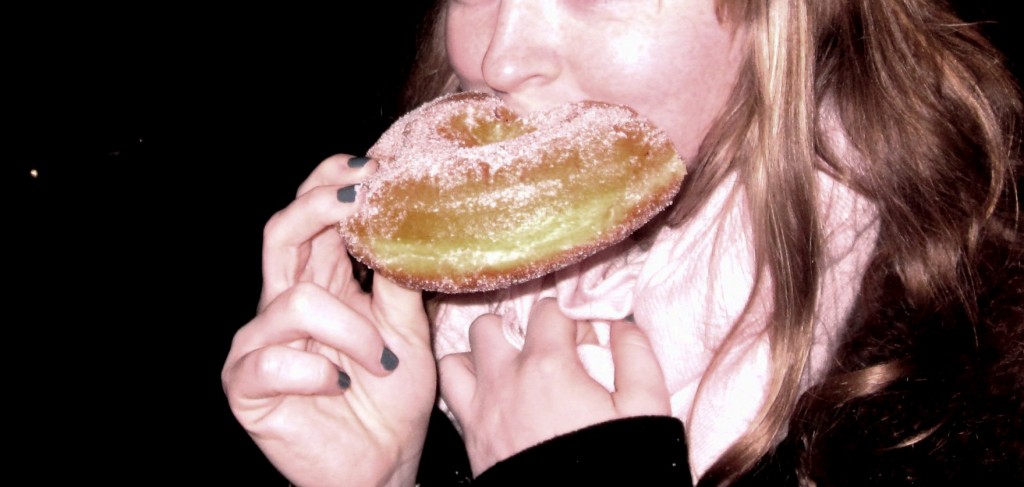When I lived in Cádiz, one day there were a bunch of life-sized (and I mean real dinosaur size) dinosaurs right in front of the cathedral. Was this an experiment the Catholic Church was putting on? Was this some kind of bizarre storage solution? Or perhaps some kind of dino-celebration? I’ll never know.
It is so easy to get swept up into the big events of a city and let the details go by unnoticed or without explanation. Spain is a place with such a deep history, there are many such details. Each village has something that makes it unique from all others, and many times, it is the festivals and traditions it practices that make it distinct. From a mermaid festival in Xove, to a sea urchin festival in Cádiz, it may well be impossible to document every one of these traditions. Here is a small sampling of some lesser-known festivals in diverse Spain.
Bando de la Huerta: Hosted by Murica in April. Though I’ve never been, a close friend has been three years in a row and hopes to never skip a year. Drinks flow all day from canteens made the traditional way: out of livestock intestines. It is a celebration of community and the changing seasons. Some consider it to be another Carnaval, though more family friendly. Neighborhoods seem to section themselves out as family zones and party zones so all can have a good time.

Ascensión: In the late spring in Santiago de Compostela, the city’s huge park, Parque Alameda, is covered in Christmas lights, fair rides are brought in and food stalls set up. The park is transformed into a county fair, Spanish style. Pulpo (octopus) is on offer in many stalls, frightening spinning rides, bumper cars, churros, cotton candy, mojitos, and of course, la noria are all there. La noria (ferris wheel) is put atop a small hill, so that from the top, you can see not only the city of Santiago, but for many more miles around. It’s a long ride for your money, if you can get past the tape holding your car to the main spoke of the wheel. Best of all, one of the last weekends, the long corridor lined with trees is lit up with white lights, and leads you to a stage where musicians and an orchestra sing and dance with the crowd. Elderly couples, children, adults, and teens dressed to the nines all come and dance here. It is a beautiful sight to behold. If this style of music isn’t your style, another concert the same night is being held in town, which is also family friendly and beer friendly (this is Spain, after all). Associated cultural events are lively throughout the city, such as a cattle fair, equestrian events and parades. The date varies, but is usually held about eight weeks after Semana Santa.

Rapa de Bestas: Shearing of the Beasts, in English, is a centuries-old tradition in the countryside of Sabucedo, Galicia. Specially-trained men will round up the wild horses and drive them to the village where they are wrestled to the ground. Unlike bullfighting, both man and beast use their own strength against each other, no weapons involved. Once the horse is on the ground, their manes and tailed are trimmed and the horse is checked for illness or injury after the long winter. This also serves to keep a record of the health of wild horse populations in the region. Some say this is a needless tradition in the modern age, when it is possible to assess the health of animal populations without wrestling matches, but as yet, the tradition stands.

Tamborrada: The beautiful and amazing city of San Sebastian is home to this festival, also known as San Sebastian Day. Hailed as the loudest festival in Spain, Tamborrada is a parade of drummers dressed as soldiers and cooks who walk down the streets every year on the twentieth of January. The drumming goes on for twenty-four hours, until the flag of San Sebastian is lowered and everybody eats.

This festival is closely followed by Caldereros the first Saturday of February, a San Sebastian opening to Carnaval. During this time, costumed locals bar hop and sing traditional songs as they have for more than a century and a quarter.
Ortigueira Festival: Way up north in Ortigueria, Galicia, this festival celebrates the folk music of the region in late July each year. The festival lasts for four days and is entirely free. Originally focusing on the Celtic history and bagpipe music, it has since evolved to include music that is not strictly Celtic. Though it doesn’t have as long a history as many other Spanish festivals, it is interesting in it its location and cultural focus.
El Rocío: While the Camino de Santiago is a months-long pilgrimage through mud and moss, the pilgrimage that is El Rocío is one of color and community. Held on the second day of Pentecost in Andalucía, (around the other spring festivals) the tradition honors the Virgin of El Rocío, embodied on a golden alter. Drums, guitars, traditional Andalucian dress, flowers and horse-drawn carriages accompany the million or so people that participate each year in this deeply felt tradition.

Of course, this humble list doesn’t even scratch the surface of all the celebrations of Spain. Explore the region you are in and talk to locals. You never know what you may discover!
Check out Fiestas de España: Part 1 for other events.

